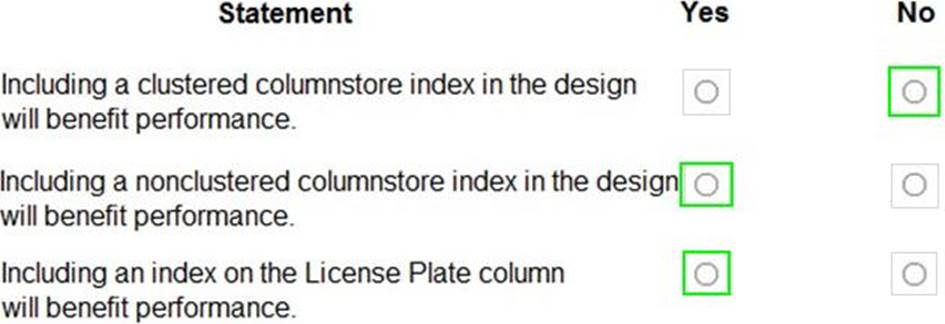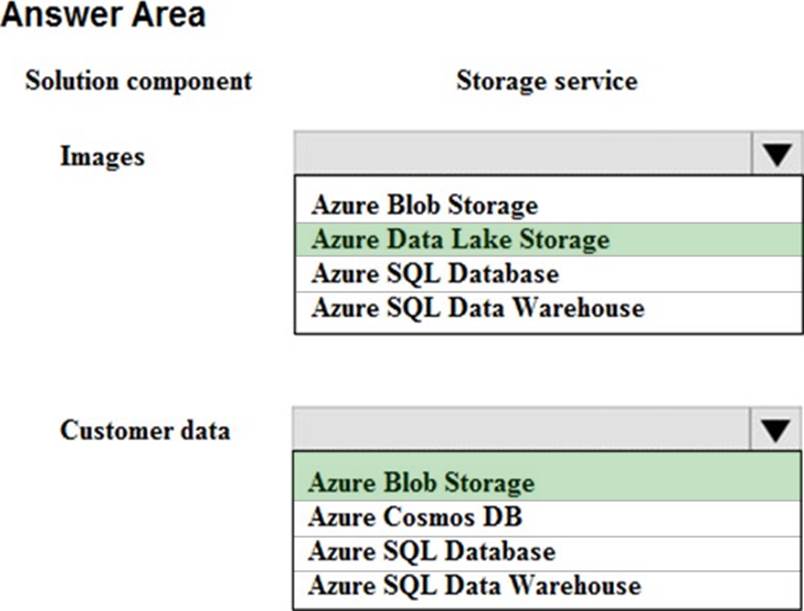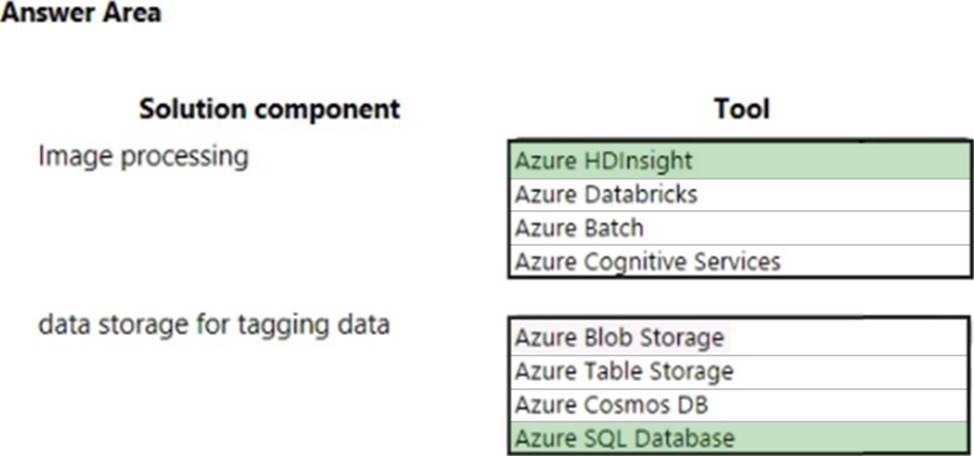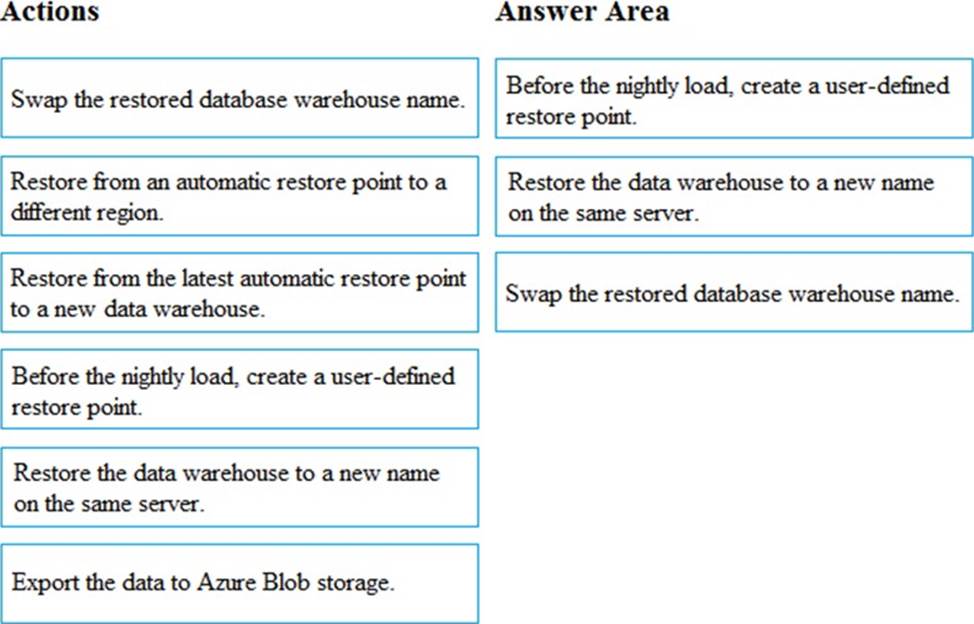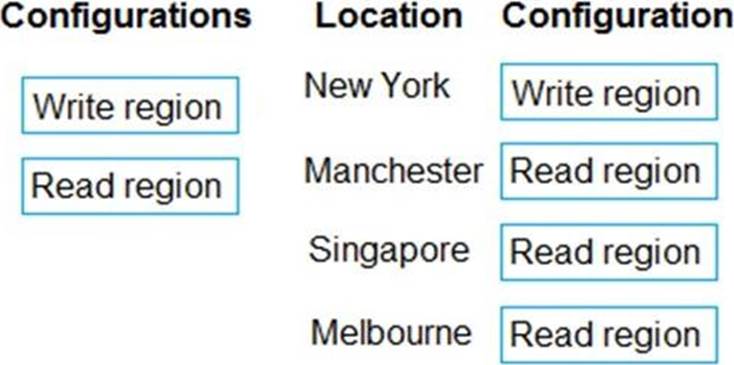Microsoft DP-201 Designing an Azure Data Solution Online Training
Microsoft DP-201 Online Training
The questions for DP-201 were last updated at Dec 15,2025.
- Exam Code: DP-201
- Exam Name: Designing an Azure Data Solution
- Certification Provider: Microsoft
- Latest update: Dec 15,2025
HOTSPOT
You need to design the Planning Assistance database.
For each of the following statements, select Yes if the statement is true. Otherwise, select No. NOTE: Each correct selection is worth one point.
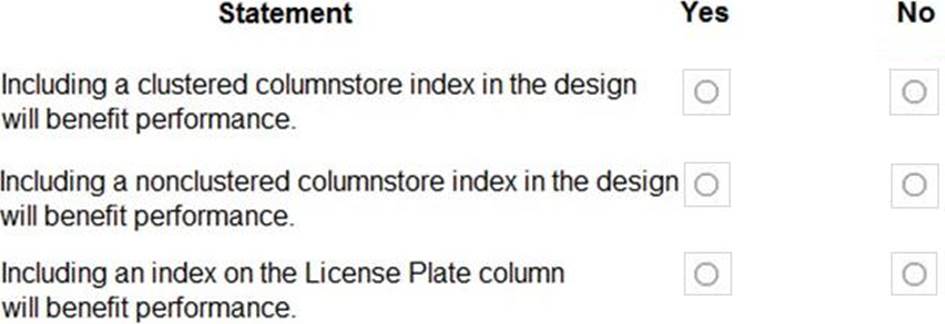
Topic 2, Case study 1
Case study
This is a case study. Case studies are not timed separately. You can use as much exam time as you would like to complete each case. However, there may be additional case studies and sections on this exam. You must manage your time to ensure that you are able to complete all questions included on this exam in the time provided.
To answer the questions included in a case study, you will need to reference information that is provided in the case study. Case studies might contain exhibits and other resources that provide more information about the scenario that is described in the case study. Each question is independent of the other questions in this case study.
At the end of this case study, a review screen will appear. This screen allows you to review your answers and to make changes before you move to the next section of the exam. After you begin a new section, you cannot return to this section.
To start the case study
To display the first question in this case study, click the Next button. Use the buttons in the left pane to explore the content of the case study before you answer the questions. Clicking these buttons displays information such as business requirements, existing environment, and problem statements. If the case study has an All Information tab, note that the information displayed is identical to the information displayed on the subsequent tabs. When you are ready to answer a question, click the Question button to return to the question.
Overview
You develop data engineering solutions for Graphics Design Institute, a global media company with offices in New York City, Manchester, Singapore, and Melbourne.
The New York office hosts SQL Server databases that stores massive amounts of customer data. The company also stores millions of images on a physical server located in the New York office. More than 2 TB of image data is added each day. The images are transferred from customer devices to the server in New York.
Many images have been placed on this server in an unorganized manner, making it difficult for editors to search images. Images should automatically have object and color tags generated. The tags must be stored in a document database, and be queried by SQL
You are hired to design a solution that can store, transform, and visualize customer data.
Requirements
Business
The company identifies the following business requirements:
– You must transfer all images and customer data to cloud storage and remove on-premises servers.
– You must develop an analytical processing solution for transforming customer data.
– You must develop an image object and color tagging solution.
– Capital expenditures must be minimized.
– Cloud resource costs must be minimized.
Technical
The solution has the following technical requirements:
– Tagging data must be uploaded to the cloud from the New York office location.
– Tagging data must be replicated to regions that are geographically close to company office locations.
– Image data must be stored in a single data store at minimum cost.
– Customer data must be analyzed using managed Spark clusters.
– Power BI must be used to visualize transformed customer data.
– All data must be backed up in case disaster recovery is required.
Security and optimization
All cloud data must be encrypted at rest and in transit.
The solution must support:
– parallel processing of customer data
– hyper-scale storage of images
– global region da
You need to recommend a solution for storing customer data.
What should you recommend?
- A . Azure SQL Data Warehouse
- B . Azure Stream Analytics
- C . Azure Databricks
- D . Azure SQL Database
HOTSPOT
You need to design storage for the solution.
Which storage services should you recommend? To answer, select the appropriate configuration in the answer area. NOTE: Each correct selection is worth one point.
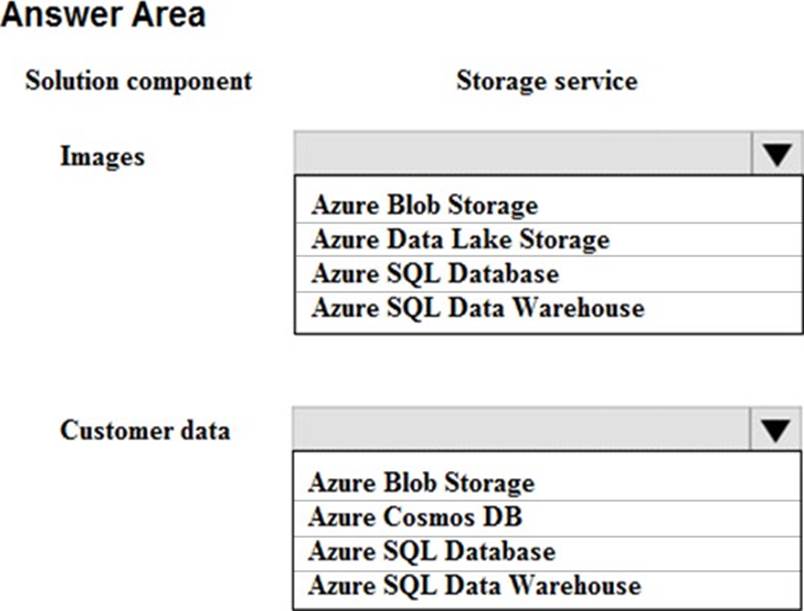
HOTSPOT
You need to design the image processing and storage solutions.
What should you recommend? To answer, select the appropriate configuration in the answer area. NOTE: Each correct selection is worth one point.
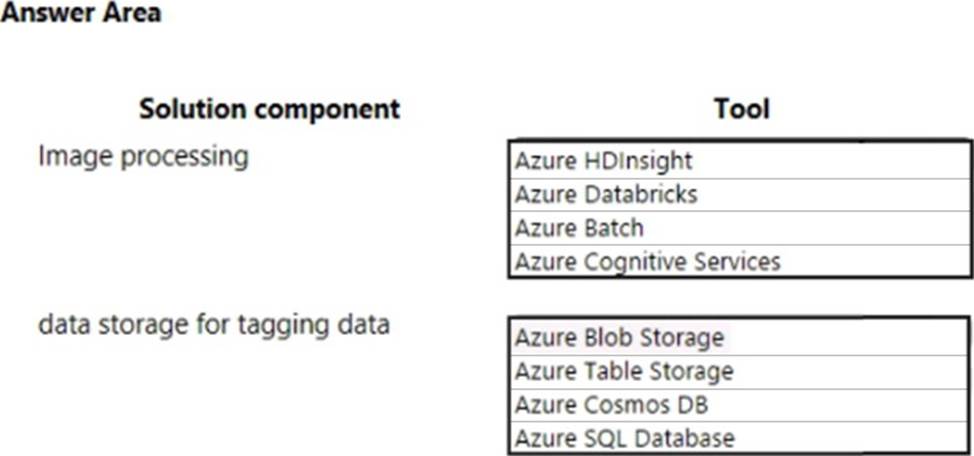
What should you recommend to prevent users outside the Litware on-premises network from accessing the analytical data store?
- A . a server-level virtual network rule
- B . a database-level virtual network rule
- C . a database-level firewall IP rule
- D . a server-level firewall IP rule
You need to design the solution for analyzing customer data.
What should you recommend?
- A . Azure Databricks
- B . Azure Data Lake Storage
- C . Azure SQL Data Warehouse
- D . Azure Cognitive Services
- E . Azure Batch
You need to design a backup solution for the processed customer data.
What should you include in the design?
- A . AzCopy
- B . AdlCopy
- C . Geo-Redundancy
- D . Geo-Replication
DRAG DROP
You discover that the highest chance of corruption or bad data occurs during nightly inventory loads.
You need to ensure that you can quickly restore the data to its state before the nightly load and avoid missing any streaming data.
Which three actions should you perform in sequence? To answer, move the appropriate actions from the list of actions to the answer area and arrange them in the correct order.
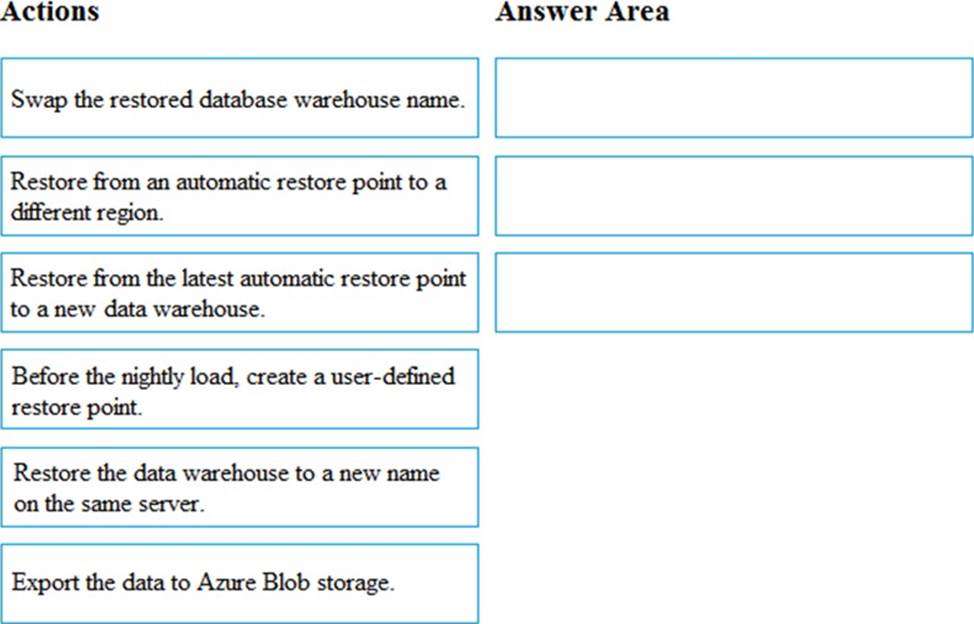
DRAG DROP
You need to design the image processing solution to meet the optimization requirements for image tag data.
What should you configure? To answer, drag the appropriate setting to the correct drop targets.
Each source may be used once, more than once, or not at all. You may need to drag the split bar between panes or scroll to view content. NOTE: Each correct selection is worth one point.
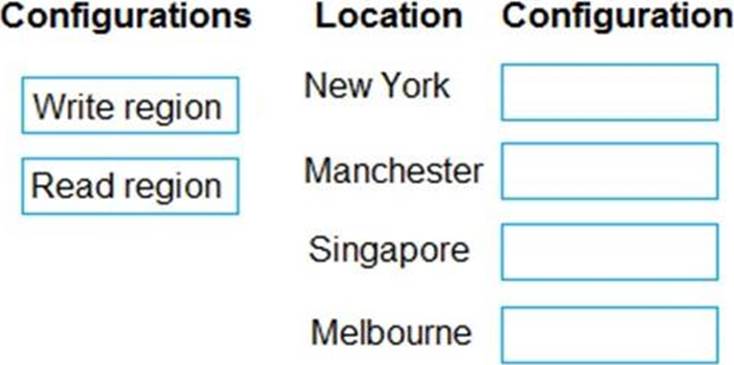
What should you recommend using to secure sensitive customer contact information?
- A . data labels
- B . column-level security
- C . row-level security
- D . Transparent Data Encryption (TDE)
Latest DP-201 Dumps Valid Version with 208 Q&As
Latest And Valid Q&A | Instant Download | Once Fail, Full Refund

